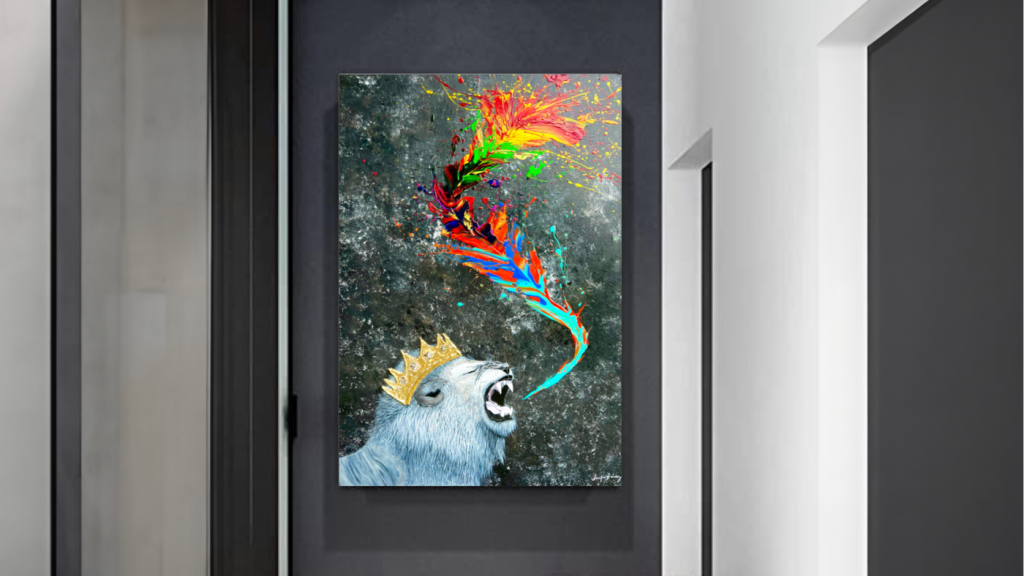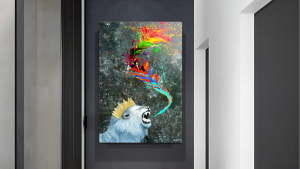In the vast canvas of our daily lives, emotions function as unseen choreographers, guiding the intricate movements of our experiences. Similarly, art, with its kaleidoscope of colors, transforms into a mesmerizing performance that reflects and intensifies these emotions. The collaboration between art and emotions creates a unique choreography, giving us a visual feast that transcends the boundaries of language. Together, let us explore the intricate dance of colors in art; delving into how it captures and communicates the countless emotions interwoven into the very essence of our being.
The Color Symphony
Colors speak their language, and artists skillfully act as choreographers using this language to express emotions. It’s similar to a dance where warm colors such as vibrant reds and yellows choreograph feelings of passion and vitality, while cool colors like blue and green orchestrate a sense of calmness and contemplation.
In this expressive symphony of art, the combination and interplay of colors serve as a universal language, enabling the artist to convey intricate and subtle emotions without uttering a single word. Each color becomes a brushstroke in the canvas of emotions, forming a visual poetry that profoundly connects to the viewers. The language of colors goes beyond the limitations of verbal communication, offering a direct connection to the emotions being portrayed.
Capturing the Soul of Emotions
Life is like a colorful tapestry made of different emotions—joy, sadness, fear, affection, and everything in between. With its many colors, art can show all these emotions on a canvas. A lively artwork could portray the enthusiasm of a joyous occasion while a calmer arrangement might mirror the serene elegance of being alone. The choreography of colors in art like language enables us to understand the depth and complexity of our emotions. It’s like a visual symphony where each color adds a note to the overall melody, blending with the rhythm of life. The canvas acts as a mirror, showing the intricate dance of our feelings and telling a visual story that connects heart and soul.
Through artistic exploration, we discover a way to connect with and understand the intricate mosaic of our emotions. Art transforms into a visual language, expressing unspoken and offering a platform for self-discovery and reflection. Whether in vibrant expressions of joy or subtle moments of reflection, the colors on the canvas take us on a visual journey into the complex landscape of the human mind. In this way, art becomes a valuable companion, leading us through the twists and turns of our emotions and offering a deep reflection of the human experience and journey.

Symbolism and Metaphor
In the composition of art, colors, like characters in a story, play symbolic roles in the choreography of art. For instance, red may indicate love or peril, while blue might convey serenity or sadness. The absence of color can evoke a profound sense of solitude or despair. The dance of colors extends beyond the visual, delving into symbolism and metaphor.
However, it is not just about how the colors look; it’s like they’re dancing and telling a story beyond what the viewer sees. Imagine a ballet where each color is a dancer, and together they create a beautiful narrative. Artists pick up and arrange colors, just like a choreographer plans dance moves. As you look at a piece of art, it is like reading a story where you get to figure out what the colors are saying; like being in a colorful adventure where each color is like a word, and the whole picture is a story waiting for you to discover its hidden meanings.
The Dance Continues – Impact On The Viewer
The choreography of colors isn’t a solo performance. They want the viewers to join in, too. When you look at a painting, your eyes become partners in a dance with the colors, figuring out the feelings and emotions the artist put into it.
This partnership creates a big impact. A painting with bright and lively colors can make you feel happy and inspired. While a painting with more calm and quiet colors might make you think deeply, feel peaceful, or maybe a little sad. It is like the painting is telling a story, enabling you to feel and understand it in your way.
This colorful dance is not just a one-time thing. The connection between the viewer and the artwork keeps growing. The painting becomes more than just what the artist made; it is like a living thing that shares a special experience with the viewer.
This ongoing dance means that every person who looks at an artwork or painting brings something new to it. Their own thoughts, memories, and feelings become part of the colorful story. Together, everyone adds to the beauty and meaning of the artwork, turning it into a timeless performance that can be enjoyed and understood specially.
In the intricate dance of life, art takes on the role of orchestrating emotions, using a vibrant palette of colors as its graceful performers. This choreography extends a welcome to everyone, urging us to participate in the dance of understanding, connection, and self-discovery. As we delve into the captivating interplay of colors, we discover that art serves not just as a mirror but as a celebration of the intricate emotions that shape our being, encouraging us to join the eternal dance of colors on the tapestry of life.





